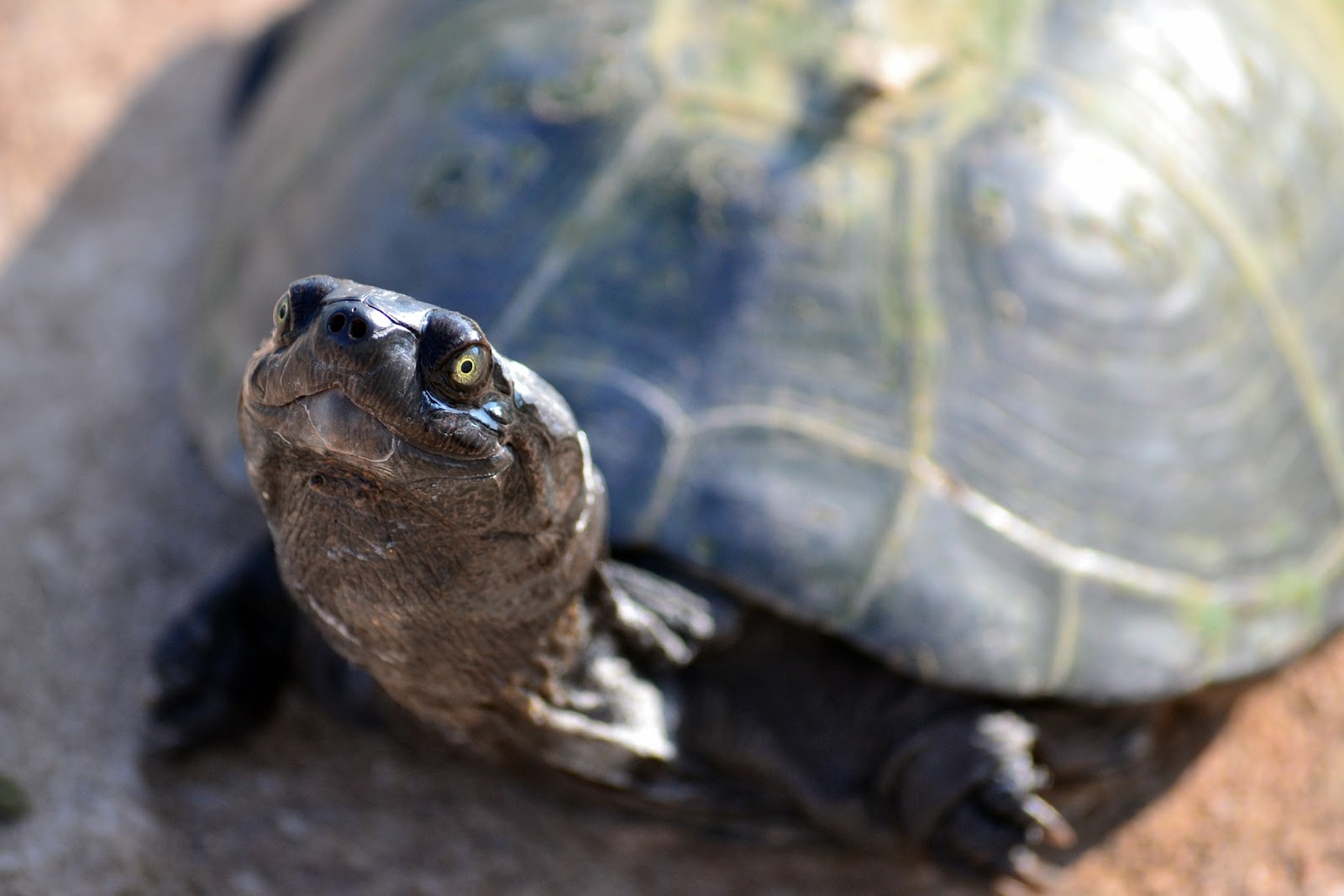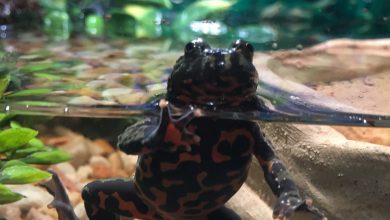Want to Know the Difference Between a Turtle and a Tortoise?

Photo courtesy of Tracy Angus-Hammond
What the differences are between a turtle and a tortoise is a common question for people to ask exotic pet store owners. And it’s actually a really important question to ask, especially if you’re planning to purchase a turtle or tortoise. That’s because even though these two animals look extremely similar, they have very different needs from each other.
So if you’re going to be taking home a new tortoise or turtle, you’ll want to find out which one you’ve got and what its particular needs are. Here’s what you need to know about the differences between these two cheloniansâ¦
First, what the heck is a chelonian? Some kind of alien?
Chelonian refers to the order of reptiles that have shells. All chelonians have shells, and both turtles and tortoises are included in this group.
Speaking of terms, the word turtle can refer to all chelonians. Technically speaking, tortoises are a particular type of turtle. However, when most people talk about turtles vs. tortoises, they’re using the word turtle to mean all of the chelonians that are not tortoises. So, to make things less confusing it’s easier just to call them chelonians when you’re talking about the whole group and leave the terms turtle and tortoise to describe the two main subcategories of chelonians.
If we’re being really specific though, when we say âturtleâ what we’re really talking about is aquatic turtles, which brings us to the first difference between turtles and tortoises.
Turtles swim and tortoises don’t
Aquatic turtles are well equipped to swim. Tortoises, on the other hand, are land animals. The fact that they look so similar to each other can make this a big problem. There have been many cases of people throwing tortoises into large bodies of water, thinking that they’re saving a turtle. But tortoises are not equipped to swim, and most of them, when thrown into a large body of water, will simply sink to the bottom and drown.
Under ideal conditions that involve the size and weight of the tortoise, and how calm the water is, some tortoises manage to float and drift until they come back to land. But this is not a safe or natural behavior for tortoises.
In the next sections will get into the physiological differences that explain why turtles swim and tortoises don’t.
Different shells
Although both turtles and tortoises have shells, if you really look at them, youâll see that their shells are not shaped quite the same. Tortoises have a heavy, dome-shaped shell that is not good for swimming.
Turtles, on the other hand, have flatter, more streamlined shells that help them glide through the water without being weighed down.
Different legs and feet
Of course, shell differences can be subtle if you donât really know what youâre looking at. The better way to tell the difference is to look at the reptileâs feet.
Turtles have flippers and a couple of claws. The flippers are what make them so good at swimming.
Tortoises, however, have legs and feet that kind of look like those of elephants (only much, much smaller). Their legs are clearly made for walking across land, and not swimming. Youâll also see clawed toes on their feet, rather than just the couple of claws on aquatic turtles feet.
Different diets
Tortoises and turtles also eat different kinds of foods. Many aquatic turtles are omnivores; however, there are hundreds of different species, ranging from full carnivores to full herbivores. But all tortoises are strict herbivores, eating only plant foods.
If you decide to bring home either a tortoise or an aquatic turtle, The Tye-Dyed Iguana has all the supplies you need, including food.
Click here to check out our selection of tortoise food.
Click here to check out our selection of turtle food.



